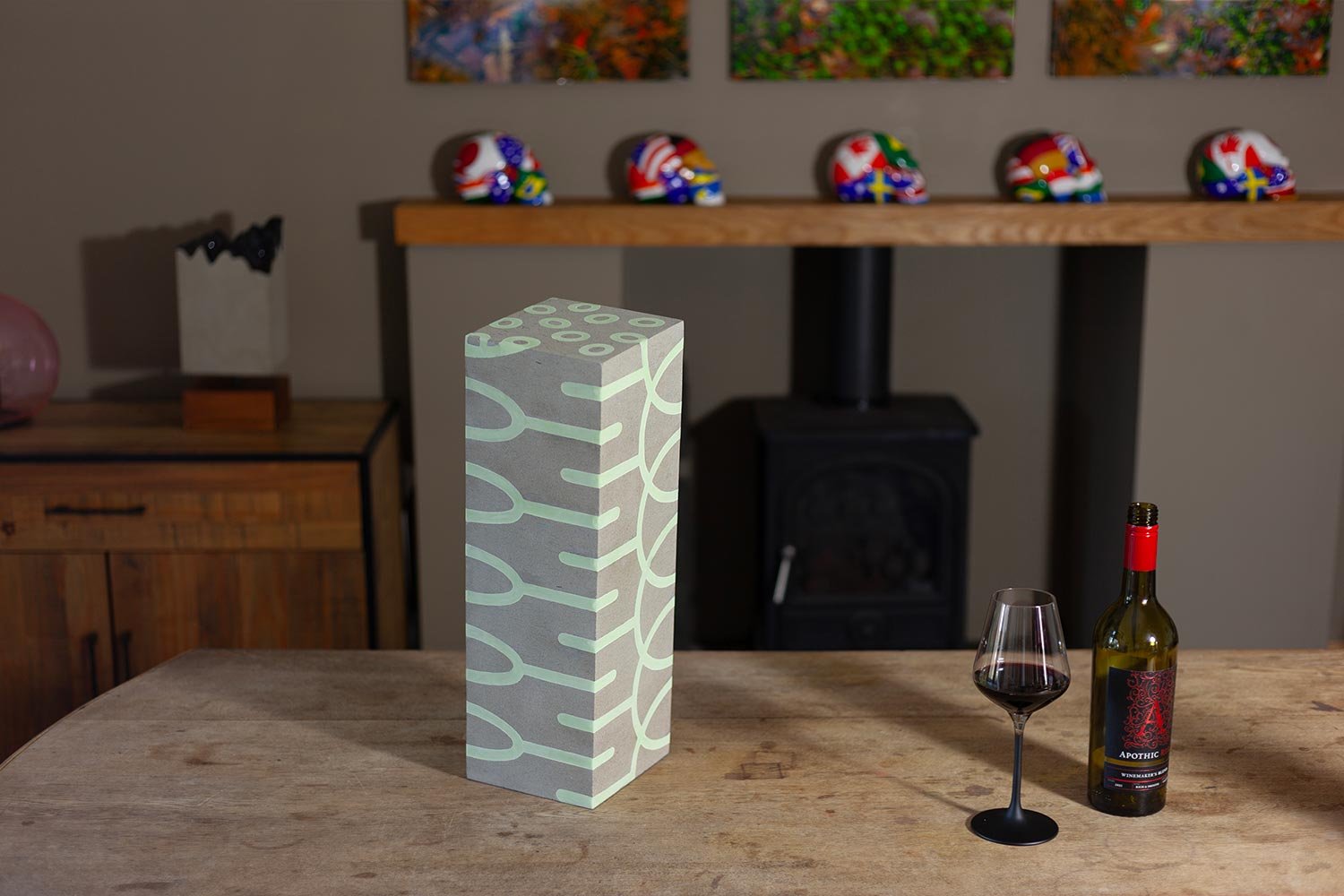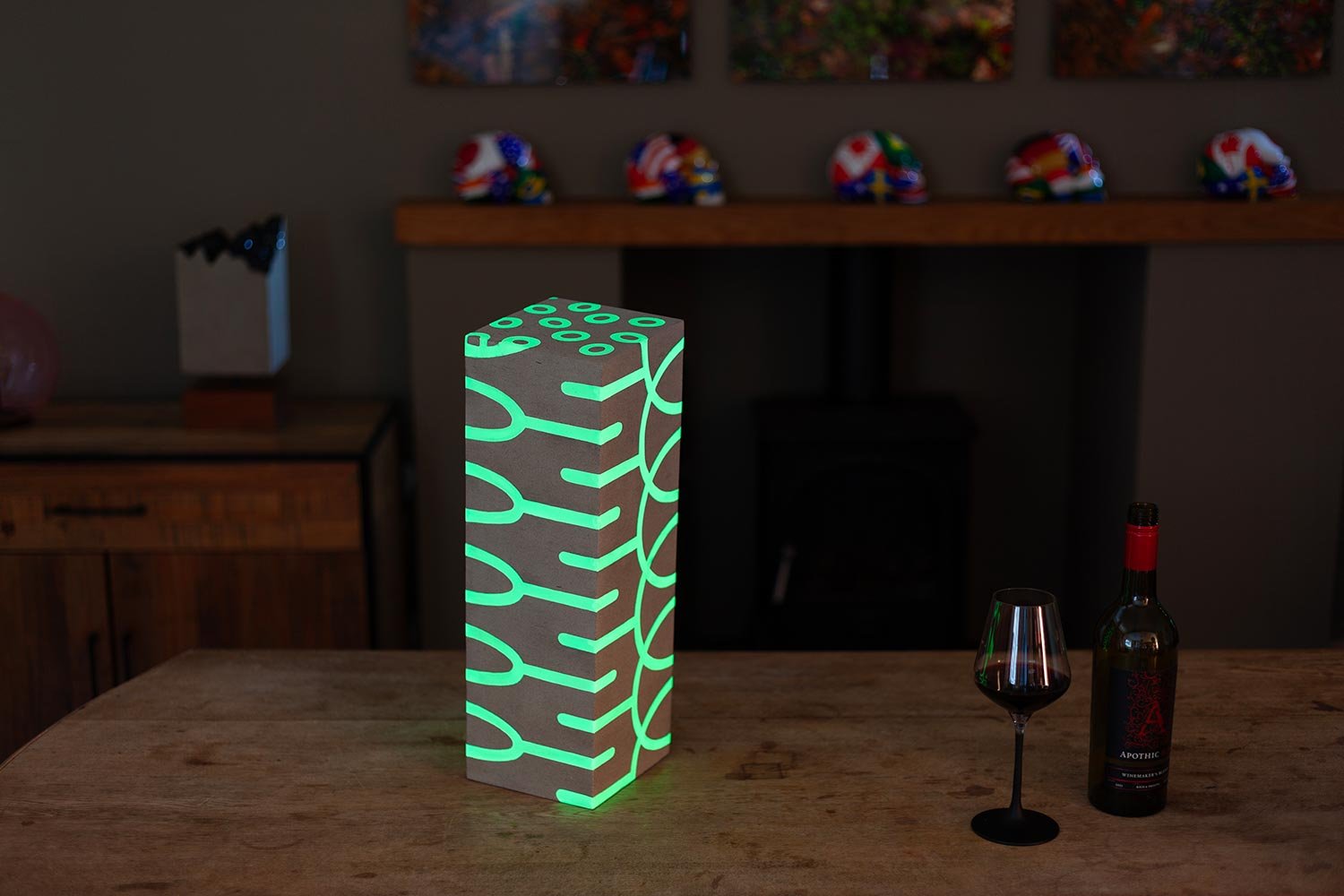CEZ
Hand-carved York stone with luminescent resin inlay.
47.5cm x 15.5cm x 14.5cm.
£2,250
Something quite remarkable has happened in the area surrounding the Chernobyl nuclear plant. Without the interference of humans it has become a haven for wildlife unexpectedly quickly.
The explosion in 1986 of Chernobyl’s #4 reactor forced more than 100,000 people from their homes and as a result of the radiation, a 30-kilometre exclusion zone was created around the reactor (Chernobyl Exclusion Zone or CEZ). In the space of just a decade, the populations of boar, elk and roe deer exploded, followed by a huge boom in wolf numbers, thought to be down to unencumbered hunting. Researchers have since found Eurasian lynx, brown bear, black storks and European bison as well as hundreds of plant and animal species, including over 60 rare species.
Yet it is the resistance of plant life that seems most incredible as all but the most vulnerable and exposed vegetation survived.
It would appear that due to the fact that plants have simpler yet more adaptable systems to their environment, they can quickly replace damaged cells and at the same time the structure of their cell walls prevents tumours spreading from one part of the plant to another unlike for animals, for which this would prove fatal. So whilst individual plants and animals may not have survived or may have shortened lives as a result of the radiation, if sufficient resources are readily available, then life will ultimately survive even an event like this.
The patterns on this sculpture represent types of specialised cells found in plants. A luminescent powder was used to create a glow-in-the-dark effect after exposure to light.
















